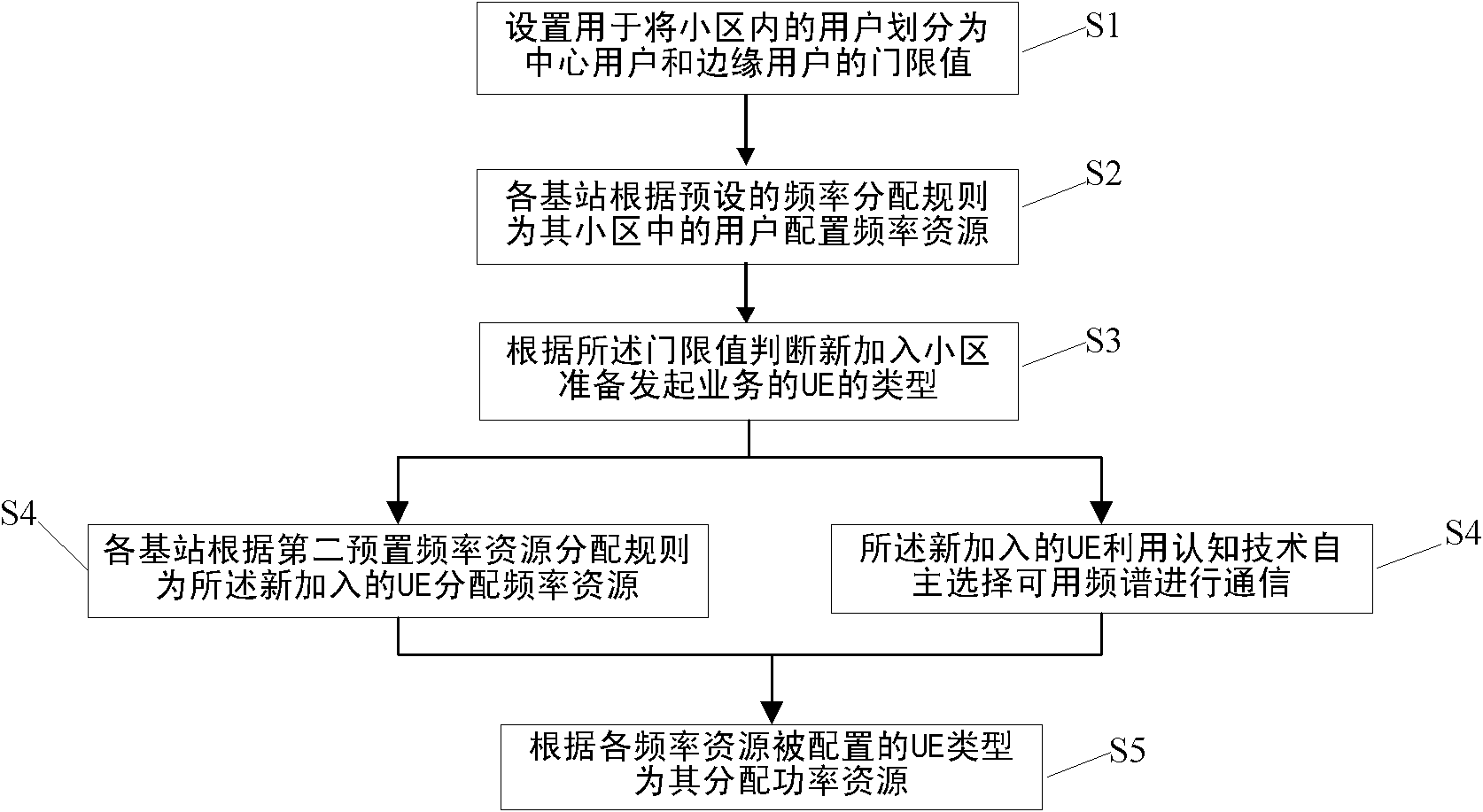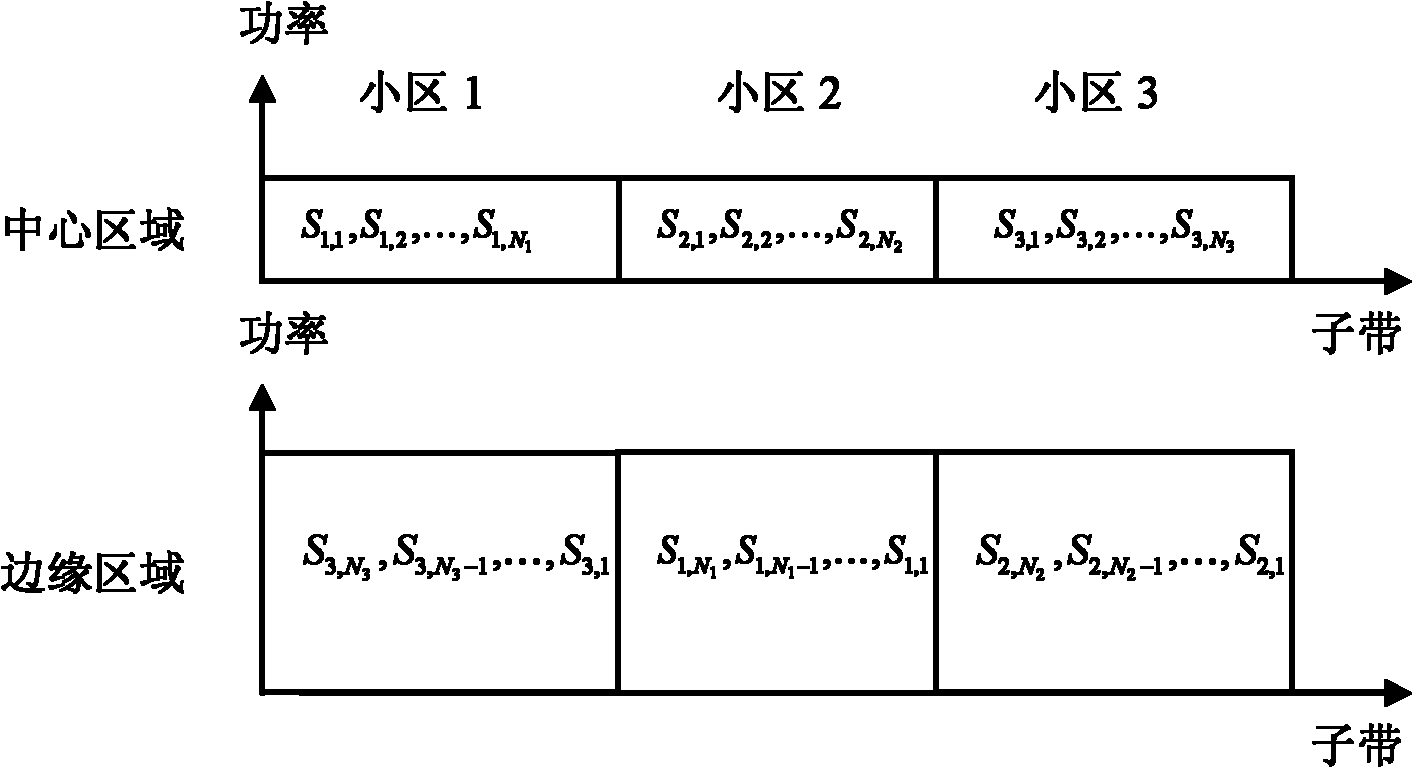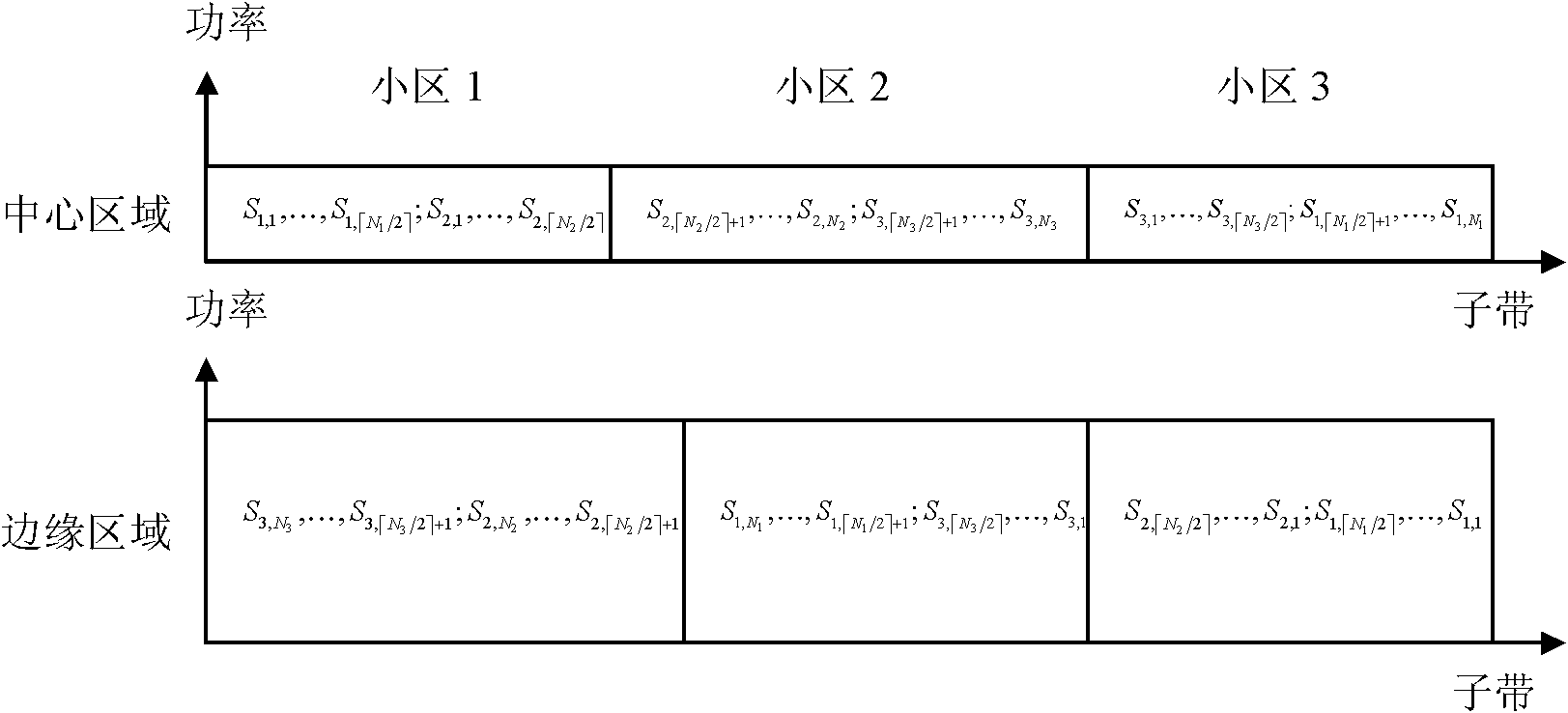Method for reducing long term evolution (LTE) radio communication system cell interference by using cognitive technology
A wireless communication system and cell interference technology, which is applied in the interference coordination field of cellular wireless communication, can solve problems such as poor user performance at the cell edge, low frequency utilization efficiency, and reduced spectrum utilization efficiency, so as to improve spectrum utilization and resource utilization Maximize the efficiency and achieve the effect of interference coordination
- Summary
- Abstract
- Description
- Claims
- Application Information
AI Technical Summary
Problems solved by technology
Method used
Image
Examples
Embodiment (
[0056] Alternatively, in the second embodiment of the present invention (namely: the foregoing embodiment in which each subband group is divided into two parts), as Figure 5 As shown, when the frequency resource is configured for the central user of cell 1, when the subband group After use, configure the subband group first When configuring frequency resources for the central user in cell 2, when the subband group After use, configure the subband group first When configuring frequency resources for the central user in cell 3, when the subband group After use, configure the subband group first
[0057] In this step, when the UE is an edge user, the UE uses cognitive technology to perform adaptive spectrum sensing, and selects the best available spectrum for communication. Such as Figure 6As shown, in this step, the specific process of using cognitive technology to perform adaptive spectrum sensing to select an available spectrum further includes the following sub-...
PUM
 Login to View More
Login to View More Abstract
Description
Claims
Application Information
 Login to View More
Login to View More - R&D
- Intellectual Property
- Life Sciences
- Materials
- Tech Scout
- Unparalleled Data Quality
- Higher Quality Content
- 60% Fewer Hallucinations
Browse by: Latest US Patents, China's latest patents, Technical Efficacy Thesaurus, Application Domain, Technology Topic, Popular Technical Reports.
© 2025 PatSnap. All rights reserved.Legal|Privacy policy|Modern Slavery Act Transparency Statement|Sitemap|About US| Contact US: help@patsnap.com



